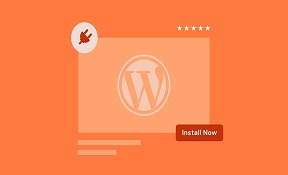Understanding how a headless content management system (CMS) works and the value it gives content-creating teams can be a time-consuming process, but it’s one that can pay off handsomely for the appropriate businesses.
There are a lot of views, ideas, and buzzwords floating about when it comes to content management and headless CMS, and distilling them down to useful takeaways that may help you make decisions can be challenging.
What is a Headless CMS?
As a result of the industrial revolution in the twentieth century, American industries invented the assembly line, which we all know today. This mode of production accomplished the following:
- It pioneered the concept of job specialization.
- It sped up the course of a linear process.
- It separated task kinds, allowing for more attention and efficiency.
- Assembly lines efficiently divided work into phases and assigned specialized resources and procedures to each level.
How Does a Headless CMS Work?
The assembly line technique is reflected in a headless CMS. It organizes the work done by both humans and technology and assigns specialized resources and processes to each. Running headless refers to the practice of creating material without regard for where it will be consumed.
But what does a typical headless CMS look like? It relies on the task being done and the desired product, just like a factory assembly line. A headless CMS, on the other hand, is usually divided into two or three parts.
The term “headless” refers to the separation of content creation and storage (the “body”) from how and where it is delivered (the “head”). If you look around long enough, you will come across a few other names that, at a high level, define the same idea, such as decoupled and content as a service.
Why is a Headless CMS so Great?
Running many platforms rather than having everything in one place may appear to be a waste of time, but it fact doubles your efforts. After all, with a standard CMS, the technology (infrastructure, user interface, etc.) takes care of everything, leaving people with only one environment to learn.
The user interface for managing plugins or extensions, for example, must also allow for content modification. However, doing everything implies that the platform’s capacity to specialize is limited.
Each component of the system can benefit from a Headless CMS solution by:
- Only use the technology that is required.
- From a maintenance and support standpoint, be separated.
- Isolate yourself from an optimization standpoint.
- Present a user interface (UI) that is appropriate for the purpose.
- Only its precise function need training.
- The most significant advantage of using a headless CMS is the ability for individuals and platforms to specialize and optimize.
Which Headless CMS is Best
While the benefits of a headless CMS are obvious, how do you determine whether to use one? There are certain crucial things to ask yourself, as with any major implementation:
- What is the utility of a headless CMS in terms of improving your content management process?
- How much will it cost?
- Is the return on investment reasonable?
What value can a headless CMS provide to your business?
Implementing a user interface (UI) tailored to content creation, for example, seems fantastic in principle, but will your team see the value? Is the current system preventing them from achieving their goals? Will the new system aid in increasing efficiency? If you answered yes, it is a good idea to ask yourself the following questions as well.
How much it cost to implement headless CMS?
The discovery phase, support, and maintenance will take time and resources, whether implemented by an internal team or outsourced. If you opt to develop a headless CMS with internal resources, keep in mind that time spent on the project is time not spent on other business objectives. Any major deployment has an opportunity cost.
Does the ROI stack up?
While a headless CMS may significantly increase the efficiency and quality of your content management skills, it is critical to know what your ROI expectations are before implementing new technology. In general, we’ve found that the larger the team(s) who work day-to-day with the platform, where operational efficiency and company profit are closely linked, the greater the potential ROI for a headless CMS installation.
